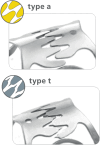Over-the-scope clip for closure of persistent gastrocutaneous fistula after gastrostomy tube removal: a multicenter pediatric experience
- PMID: 39187732
- PMCID: PMC11525288
- DOI: 10.1007/s00464-024-11166-2
Over-the-scope clip for closure of persistent gastrocutaneous fistula after gastrostomy tube removal: a multicenter pediatric experience
Abstract
Background: Percutaneous endoscopic gastrostomy is commonly used for enteral nutritional access, but gastrocutaneous fistulae (GCF) may persist after tube removal, posing clinical challenges. The use of endoscopic closure devices, including over-the-scope clips (OTSC), has shown promise in managing non-healing fistulae, although data in the pediatric population are limited.
Methods: A retrospective multicenter study analyzed pediatric patients who underwent GCF closure following gastrostomy tube removal. Data from seven centers across multiple countries were collected, including patient demographics, procedural details, complications, and outcomes. Closure techniques were compared between OTSC and surgical closure.
Results: Of 67 pediatric patients included, 21 underwent OTSC closure and 46 had surgical closure. Surgical closure demonstrated a higher success rate (100%) compared to OTSC closure (61.9%, P < 0.001). While procedural duration was shorter for OTSC closure (25 vs. 40 min, P = 0.002), complications, and scar quality were comparable between techniques. A subsequent sub-analysis did not reveal differences based on center experience.
Conclusion: OTSC closure is feasible and safe in pediatric patients, but surgical closure remains superior in achieving sustained GCF closure, although OTSC offers benefits, such as shorter procedural duration, potentially reducing the duration of general anesthesia exposure. Non-operative approaches, including OTSC, may be a valuable alternative to surgical closure.
Keywords: Closure techniques; Gastrocutaneous fistula; OTSC; Ovesco; PEG removal; Pediatric surgery.
© 2024. The Author(s).
Conflict of interest statement
Antonio Corsello, Matthieu Antoine, Shishu Sharma, Valérie Bertrand, Salvatore Oliva, Giorgio Fava, Francesca Destro, Andrew Huang, Wei SW Fong, Martina Ichino, Mike Thomson, and Frederic Gottrand have no conflict of interest to disclose.
Figures



References
-
- Kvello M, Knatten CK, Bjørnland K (2020) Laparoscopic gastrostomy placement in children has few major, but many minor early complications. Eur J Pediatr Surg 30:548–553. 10.1055/s-0039-3401988 - PubMed
-
- Homan M, Hauser B, Romano C, Tzivinikos C, Torroni F, Gottrand F, Hojsak I, Dall’Oglio L, Thomson M, Bontems P, Narula P, Furlano R, Oliva S, Amil-Dias J (2021) Percutaneous endoscopic gastrostomy in children: an update to the ESPGHAN position paper. J Pediatr Gastroenterol Nutr 73:415–426. 10.1097/MPG.0000000000003207 - PubMed
-
- Romano C, van Wynckel M, Hulst J, Broekaert I, Bronsky J, Dall’Oglio L, Mis NF, Hojsak I, Orel R, Papadopoulou A, Schaeppi M, Thapar N, Wilschanski M, Sullivan P, Gottrand F (2017) European society for paediatric gastroenterology, hepatology and nutrition guidelines for the evaluation and treatment of gastrointestinal and nutritional complications in children with neurological impairment. J Pediatr Gastroenterol Nutr 65:242–264. 10.1097/MPG.0000000000001646 - PubMed
-
- El-Rifai N, Michaud L, Mention K, Guimber D, Caldari D, Turck D, Gottrand F (2004) Persistence of gastrocutaneous fistula after removal of gastrostomy tubes in children: prevalence and associated factors. Endoscopy 36:700–704. 10.1055/s-2004-825662 - PubMed
Publication types
MeSH terms
LinkOut - more resources
Full Text Sources

